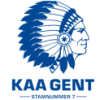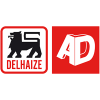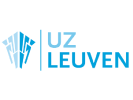Frequently Asked Questions
Inform, animate, inspire or attract, we want it all in our communication. But when it comes to advertising, your message or brand must be distinctive from the rest. The content and design of your message is important, but what good is strong content if you cannot fully display it visually? Shame!
That is why the choice of an appropriate LED application is so important. With a bright, lively and attractively striking screen you immediately attract the attention of passers-by. It even goes further than that. With the right combination of images and colors you can take passers-by into your story. But that is not the only advantage of an LED screen. In addition, LEDs are environmentally friendly and user-friendly. LED screens have a wide color range that can be perfectly adapted to any situation. This results in high brightness and greater light intensity, which in turn results in lively and therefore striking screens.
When you talk or read about LED, you have probably heard the word pixel pitch several times. The pixel pitch or the pixel size is actually the distance between the LED pixels. This is expressed in millimeters. The pixel pitch and the overall size determine the final resolution of an LED screen. The smaller the pixel pitch, the higher the resolution of the LED screen.
The pixel pitch will not only be determined based on the viewing distance and the size of the LED screen. It is best to know in advance what you are going to use the LED screen for. Also think carefully about what you want to show on the LED screen and how much detail is present in the content. For content with a lot of detail, you need a higher resolution and therefore a smaller pixel pitch. If you use the LED screen outside, you must take the influence of light into account.
To give you an example, we have highlighted the pixels in the images below. The first photo has a pixel pitch of 4mm, the second of 6mm and the third of 8mm.
Once you know the dimensions and pixel pitch of the LED screen, you can calculate the resolution. Would you like to join us?
Case 1
We have a screen of 4m² or 156 cm H x 260 cm W
With a pixel pitch of 10 mm SMD Calculation
Height: 1,560 mm /10 = 156 pixels Width: 2,600 mm / 10 = 260 pixels Total Resolution: 156 x 260 = 40,560 Pixels This LED screen has a rather low resolution and is therefore mainly suitable for texts, icons, logos and photos Case 2 We have a screen of 4m2 or 156 cm H x 260 cm W With a pixel pitch of 6 mm SMD Calculation Height: 1,560 mm / 6 = 260 pixels H Width: 2,600 mm / 6 = 433 pixels W Total Resolution: 260 x 433 = 112,666 Pixels This LED screen has a high resolution and can be used for all applications, including video, live competitions and films.
There are different types of LED screens that can be used for every situation and application. By following the steps below you can quickly form an idea of which LED application may be suitable for you. There are of course many other factors to take into account, our LED experts are happy to guide you further, but you can quickly go through these steps:
Step 1: At which location do you need the LED screen? Inside or outside?
Step 2: Do you want to use the LED screen at multiple locations or at 1 fixed place?
Solutions for outside:
A fixed LED screen on the facade or a fixed LED totem.
A mobile LED screen through an LED trailer or a flower box.
Solutions for indoors:
A fixed LED screen through a construction in the showroom/company building.
A fixed LED screen behind the window or transparent LED.
A mobile LED screen through a mobile construction or LED posters.
If you choose synchronous control, connect an external video source to the screen. The screen will then display real-time images that you send to it. The screen becomes, as it were, your second screen. Example: HDMI from your PC, DVD player, video camera, etc.
With asynchronous control, a media player is placed in front of the screen, into which you can upload the content. The media player will then play the content in loop. A combination of synchronous and asynchronous is also possible.
All our LED screens, with the exception of our transparent and mesh LED screens, are modularly constructed with modules of 250 x 250. This means that all dimensions are possible in multiples of these modules. Thanks to our in-house LED specialists, we tailor our constructions entirely to the desired size or shape. When designing a construction for an LED screen, we take into account in advance the location where it will be installed, so that sufficient space is always left for the LED screen to cool through ventilation.
Brightness means light intensity. A high brightness is a screen with a higher brightness. This higher brightness, among other things, allows you to display images with a higher contrast. Images with this high contrast are more visible and readable. They stand out more and are better remembered by passers-by. Thanks to the higher brightness, your content always remains clearly visible, even in sunlight or a brightly lit room, which is not the case with a screen with a lower brightness.
Given the wide variation in designs and dimensions, every project is tailor-made. The prices are very variable per type of LED screen and chosen pixel pitch. Purchasing an LED screen is an important, large, but certainly also a good and sustainable investment. Therefore, choose an LED specialist with knowledge, quality and reliability. Because when you are considering purchasing an LED screen, it is important to take into account very different quality differences. The efficiency of an LED screen increases with the duration of use. So make sure that the LED screen is always properly maintained.
Request a quote















